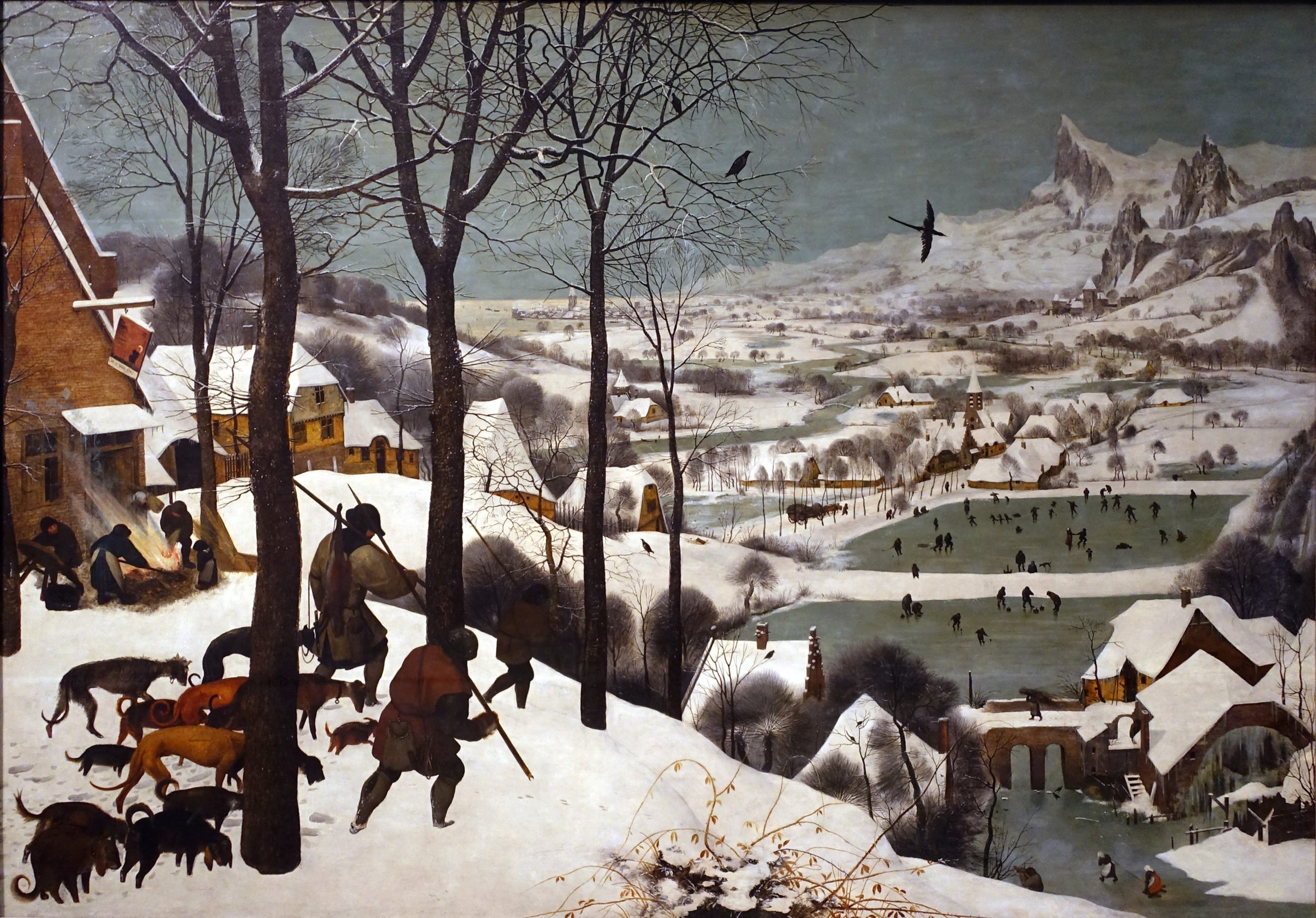Hunters in the Snow, Pieter Bruegel the Elder
Pieter Bruegel the Elder, Hunters in the Snow (Winter), 1565, oil on wood, Kunsthistorisches Museum, Vienna
In the early 16th century, Christendom experienced a dramatic divide when in 1517 Martin Luther published his 95 Theses, attacking the abuse and corruption committed by the Roman Catholic Church, initiating the Protestant Reformation. As Luther’s ideology spread and gained popularity, Protestantism grew in Northern Europe, while Roman Catholicism maintained dominance in the south. Thus, a social revolution erupted in Europe, reconfiguring the relationship between not only the church and the churchgoer, but also the patron and the artist.
Amidst these changes, Humanism, led by Erasmus, began to spread throughout Europe, expressing that goodness and value can be found in humanity. With this came a shift in focus from the deity to the human, human problems, the divine in people, and the celebration of humans. These ideas spread north from Italy, and with them came Italian Renaissance Art, which Dutch artists developed into their own style, Northern Renaissance art. Italian art featured many Christian subjects as the Catholic Church was the primary patron of Southern Europe, while Northern Renaissance artists went to the wealthy as patrons, focusing on genre scenes and everyday life. Among these Northern Renaissance works lies a masterpiece by Pieter Bruegel the Elder, Hunters in the Snow.
Commissioned by a Merchant in Antwerp, this work is a part of a six piece panel studying the labors of the months, corresponding to each season of the year. Of the original panel, five pieces remain: The Gloomy Day, The Harvesters, The Hay Harvest, Hunters in the Snow, and Return of the Herd. Painted in 1565, this work would have only been available to the wealthiest of patrons as a result Bruegel’s use of oil paint on such a large scale, measuring roughly 4x5 feet.
The work depicts a group of hunters and their dogs returning from a hunt, with only a singular rabbit to show. A sense of melancholy hangs over the hunters who seem to trudge through the snow with their heads hanging down and their backs turned. The dull colors highlight the cold, wintery atmosphere, providing a sense of struggle to those returning from the hunt. As dreary as the foreground may seem, the painting, with essentially no middle ground, almost immediately transitions into the background, depicting a very different mood amongst the struggles of the hunters.
Although the figures in the background are tiny appear to be insignificant, the detailed work of Bruegel brings to life a sense of playfulness and joy. On the lake, there are people sledding, ice skating, curling, playing ice hockey, someone who has fallen and lost their hat, a woman carrying what may be firewood, and many other typical daily human activities. Although the work appears to be dark and dreary, it displays a sense of hope and honor. There is a realness to this painting; the mundaneness of everyday life coupled with the joy that comes from such simple activities. Purpose is given to the mundane tasks, including hunting, collecting firewood, or simply pulling someone on a sleigh.
The environment in which Bruegel paints this scene is not an actual view, but rather a rendering from his imagination. When he went to Italy, Bruegel brought back with him not the techniques or latest traditions of Italian Renaissance artists, but the landscape of his trip, namely the Alps. Just as the birds in the painting soar through the sky, our eyes soar through the landscape, viewing the tall, rigid mountains. Hunters in the Snow is a composed and partially imagined landscape activated by the presence of these minuscule figures, taking part in distinctly human activities. A cold environment warmed by its human inhabitants highlights the wave of Humanist thought sweeping through Europe at the time.
